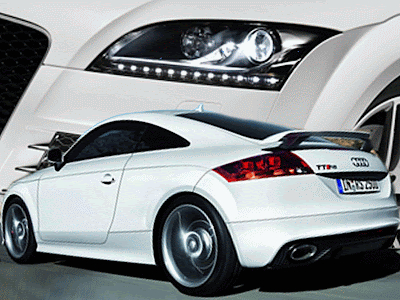Touring Superleggera A8GCS Berlinetta was revealed in the flesh at the 2010 Geneva Motor Show after being previewed at the Concours d'Elegance. At the Festival Automobile in Paris last month, a panel comprised of designers, car experts and former Formula 1 driver Alain Prost awarded the Maserati A8GCS Berlinetta Touring the most beautiful supercar of the year. Television network Eurosport fielded over one million votes from viewers for the competition. Viewers’ choices included the Bugatti Sport Veyron, BMW 750i and Lotus Evora.
2010 Touring Superleggera A8GCS Berlinetta
Now this is how it's done. The Touring Superleggera A8GCS Berlinetta is a Maserati Gran Turismo rebodied with classic GT proportions and shapes. The result is classically beautiful, like a 1950s Maserati re-interpreted with 21st century technology.
Based on the Maserati Coupé GranSport mechanics, the A8GCS Berlinetta Touring represents the high performance sports car concept, with small dimensions, state-of-the-art constructive technology and perfect stylish synthesis between factory tradition and advanced aesthetic criteria.
Unlike the Bentley Flying Star shooting brake that's also from Touring Superleggera, the Berlinetta isn't destined for a well-heeled car nut. The company created it specifically to showcase its coachbuilding skills. If they have their way, they'll be turning the Maserati Gran Turismo and other exotic cars into vehicles that are even more exclusive, luxurious and personalized.

The new A8GCS Berlinetta Touring has been designed by the young Belgian designer Louis de Fabribeckers, in charge of the Touring styling department. The A8GCS Berlinetta Touring lines are not affected by time or fashion: the car is characterized by a soft aggressiveness originated by the perfect balance between the front end, directly derived from competitions, and the harmonious and fluent flanks reminding of the extraordinary Alfa Romeo, Isotta Fraschini and Lancia Flying Star of the Thirties, an exceptional series created by Touring and still considered the best interpretation of Marinetti and Boccioni’s Futurism.
The Carrozzeria Touring Superleggera style is first expressed through perfecly balanced volumes (reduced front overhang, front central engine and large rear overhang). The result is a dynamic form that doesn’t need a lowered waistline. Moreover, the horizontal development of lines create a natural elegance.
The sporty look of the car is underlined by the combination between bonnet and front grille. An element dashing forward the other volumes. Hence the lateral lines of the body: the lower line ends on the rear wheelarch and the upper line dissolves in the rear end of the car. Together they create a dynamic sail shape, as on Flying Stars.

Of course, also the most successful car design is not enough to make an alive and complete object. It must be combined with excellent dynamic qualities, derived from state-of-the-art technical solutions. For the prototype A8GCS Berlinetta Touring, Carrozzeria Touring Superleggera studied and designeda body in advanced composite materials, able to give the car lightness, structural strenght and performance typical of top granturismo and obviously respecting all international safety and environmental rules. The result is clear: the style protoype A8GCS Berlinetta Touring is able to enter small series production, gaining immediately a top place among the best sports cars.

The A8GCS is a strict two-seater, unlike the car on which it's based which features a 2+2 seating layout. Touring Superleggera have made extensive changes to the car's bodywork while still retaining similar proportions. The styling details like the minimalist chrome trim and classic wire wheels give the car a distinctive retro vibe, while also not being unnecessarily nostalgic.
"We wanted a strong project" - says the Belgian Head of Design of Touring Superleggera, Louis de Fabribeckers - "I drew from the stylistic heritage of Touring the work of surfaces and also this sinusoidal line across the side of the Berlinetta".
The Touring Superleggera A8GCS Berlinetta is 4.2 metres long and only 1.2 metres high. The engineers are aiming for a 1,500 kg (3,307 lb) weight for the finished car - 180 kgs (400 lbs) lighter than the Maserati GranSport.























































